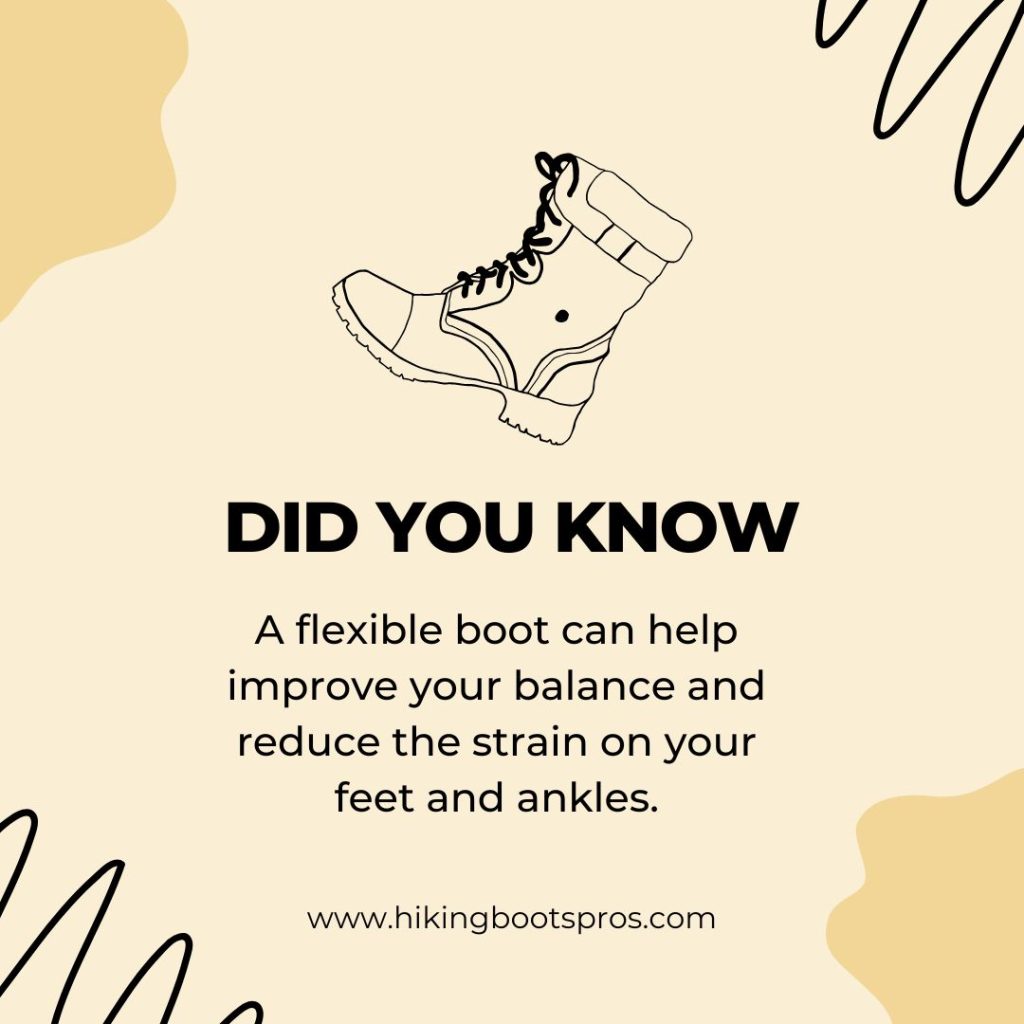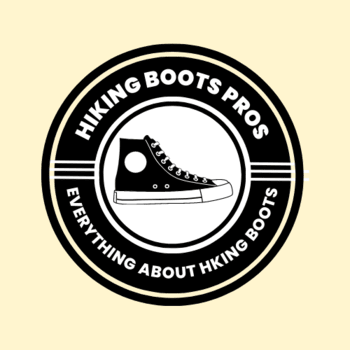Last updated on May 8th, 2023
Are you planning your next hiking trip and wondering if your boots should be flexible or stiff? When it comes to hiking boots, there are many factors to consider, and one of them is flexibility. Some hikers prefer more rigid boots for support and protection, while others prioritize comfort and flexibility.
In this blog post, we will explore the question of whether hiking boots should be flexible, the importance of sole flexibility when choosing hiking boots, and how stiff hiking boots should be. So, whether you are a seasoned hiker or a beginner, read on to learn more about hiking boot flexibility.
Should Hiking Boots Be Flexible?
When it comes to hiking boots, flexibility is a matter of personal preference and the type of hiking you will be doing. Generally, more flexible boots are lighter and more comfortable, while stiffer boots provide more support and protection.
Hikers who prefer more flexible boots tend to prioritize comfort and agility on the trail, while those who opt for stiffer boots value support and stability. So, before deciding on the flexibility of your boots, consider your hiking style and the terrain you will be hiking on.
Keep Sole Flexibility in Mind When Choosing Hiking Boots
When it comes to hiking boot flexibility, sole flexibility is an important factor to consider. The sole of a hiking boot should be flexible enough to allow for natural foot movement, but not so flexible that it compromises support and stability.
A sole that is too stiff can be uncomfortable and may not provide enough traction, while a sole that is too flexible may not offer enough support and protection. Look for boots with a sole that flexes at the ball of the foot, where your foot naturally bends.
Boot Rigidity vs. Boot Support
When choosing hiking boots, it is essential to understand the difference between boot rigidity and support. A boot’s rigidity refers to how stiff or flexible it is, while its support refers to how well it protects and stabilizes your foot.
A boot can be flexible and still offer excellent support, and a stiff boot may not provide enough support for your foot. So, consider both rigidity and support when choosing your hiking boots.
The Importance of Boot Flexibility

Flexibility is essential in hiking boots as it allows your foot to move naturally and comfortably. When hiking, your foot will encounter a variety of terrains, and a flexible boot will allow you to adapt to these changes quickly.
A stiff boot can restrict movement, leading to discomfort and potential injury. Additionally, a flexible boot can help improve your balance and reduce the strain on your feet and ankles.
Are Hiking Boots Supposed to Be Stiff?
Hiking boots can be stiff, but they don’t have to be. The stiffness of your boots depends on the type of hiking you will be doing and your personal preference. Some hikers prefer stiffer boots for rocky terrain, while others opt for more flexible boots for comfort and agility.
Stiff boots provide more protection and support, but they can also be heavier and less comfortable. Ultimately, the stiffness of your boots should match your hiking style and the terrain you will be hiking on.
Stiffness vs. Comfort
While stiff boots offer more protection and support, they can be less comfortable than more flexible boots. Stiff boots can cause blisters and hot spots, and they can also restrict movement and flexibility.
On the other hand, more flexible boots can be lighter and more comfortable, but they may not provide as much protection and support. So, when choosing your hiking boots, consider both stiffness and comfort.
know: Can I wear leather boots for hiking
Conclusion
In conclusion, the flexibility of hiking boots is an important factor to consider when selecting the right footwear for your hiking trip. While some hikers prefer boots with a stiff sole for added support and protection on rugged terrain, others prefer more flexible boots for increased mobility and comfort.
When considering the flexibility of your hiking boots, it is important to take into account the type of terrain you will be hiking on and the duration of your hike. For longer hikes on more varied terrain, a flexible boot may be more comfortable and prevent foot fatigue. However, for more technical terrain with uneven surfaces, a stiffer sole may provide better support and stability.
Ultimately, the flexibility of your hiking boots will depend on your personal preference and the specific needs of your hiking trip. It is important to try on multiple pairs of boots and test them out on various terrain types to find the right fit and level of flexibility for your needs.
No matter what type of hiking boots you choose, it is important to break them in before hitting the trails and to always prioritize safety on your hikes by bringing along proper gear and equipment, staying hydrated, and following Leave No Trace principles.
In summary, when it comes to the flexibility of hiking boots, there is no one-size-fits-all solution. The best hiking boots for you will depend on your individual needs and preferences, as well as the specific requirements of your hiking trip.
FAQs
It’s better to have a snug and secure fit in hiking boots without being too tight or restrictive, to prevent blisters and discomfort on the trail.
Hiking boots should have a flexible sole that bends naturally with your foot while providing enough support and stability for rough terrain.
Flexible shoes can be better for your feet in terms of allowing natural foot movements and reducing the risk of injury, but it also depends on the activity and individual foot type and needs.

Tyler Looney is an avid hiking enthusiast and the author of HikingBootsPros.com, a website dedicated to providing helpful insights and advice on choosing the best hiking boots. His expertise and passion for hiking have made him a valuable resource for both beginner and experienced hikers alike.

